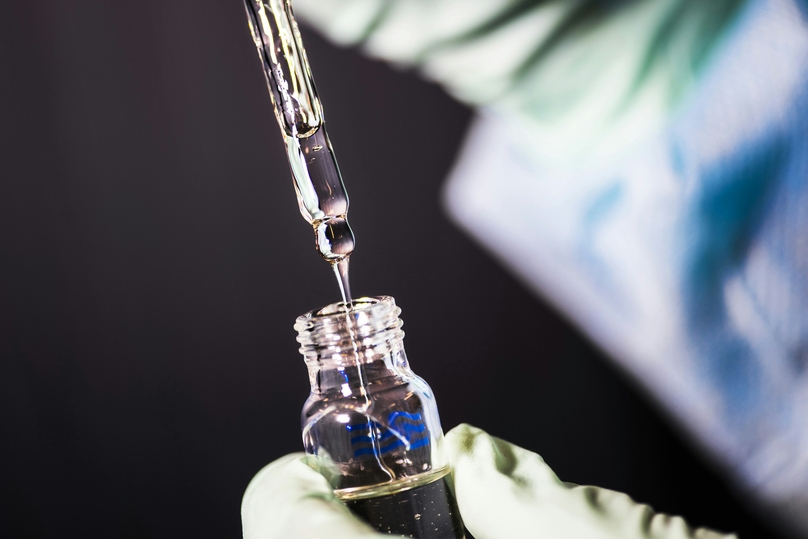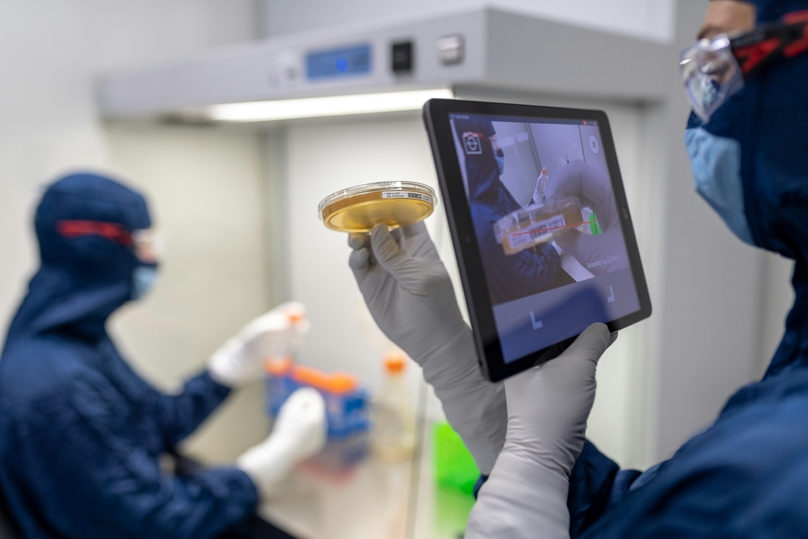1. The Rise of Cell & Gene Therapy Bioprocessing
Cell and gene therapy (CGT) has moved from experimental promise to a rapidly scaling commercial market. CAR-T, AAV vectors, mRNA platforms, and autologous treatments are reshaping how diseases are treated, especially in oncology and rare genetic disorders. This shift has triggered a parallel demand for digital manufacturing infrastructure—the industry can no longer rely on notebooks, spreadsheets, or disconnected systems.
CGT is fundamentally different from traditional biologics. It manipulates living cells and genetic material, where every donor, patient, and cell line behaves differently. Two identical protocols can deliver dramatically different outcomes. This makes batch variability, traceability, and process reproducibility top concerns for R&D, process development, and GMP manufacturing teams.
Bioprocessing facilities now face three converging pressures:
Scale and throughput: From small research batches to commercial volumes.
Regulatory scrutiny: 21 CFR Part 11, GxP, GMP, Annex 11, chain of identity.
Operational complexity: Dozens of instruments, multi-stage workflows, frequent QC checkpoints.
To meet this demand, forward-leaning labs are shifting toward AI-powered LIMS that not only digitize records, but actively guide operations, reduce risk, and accelerate time to release. Instead of simply storing data, these systems enable real-time insights, automated suggestions, and predictive decision-making—critical capabilities as CGT continues its rise.
2. Bioprocessing Is Data-Intensive: Where Labs Struggle Most
Cell and gene therapy (CGT) bioprocessing produces massive volumes of interconnected data. Each workflow stage—donor sampling, viral vector engineering, cell activation, expansion, purification, QC testing, and cryostorage—produces unique datasets that are difficult to reconcile manually. Bioreactors generate continuous time-series data; sequencing instruments output multi-dimensional analyses; and storage systems track temperatures, vial movement, and location changes. Teams often rely on spreadsheets or isolated software tools, forcing scientists to spend more time aggregating values than interpreting results.
Where the strain becomes visible is in scalability. A process that works for three patients breaks down at thirty. Batch variability can’t be reviewed across hundreds of runs, deviations disappear inside notebooks, and instrument logs are spread across folders and USB drives. These inefficiencies slow R&D, increase time to release, and compromise compliance readiness. As labs transition from discovery to manufacturing, the inability to synthesize large volumes of data becomes a structural constraint rather than a temporary inconvenience.
Common bioprocessing bottlenecks include:
Siloed instrument data: CSV exports and proprietary formats require manual reconciliation.
Traceability gaps: Sample identity and lineage are not tracked across processing stages.
QC documentation delays: Labs review test reports after failure, not before.
Batch variability: No clean way to compare run-to-run performance or training new models.
Without digital systems designed for complexity, CGT labs end up scaling labor instead of science.
3. Why AI Is Becoming Central to Modern Bioprocessing
AI is reshaping bioprocess manufacturing because it transforms laboratory systems from passive data stores into predictive tools. Instead of reviewing raw measurements, scientists receive immediate insights—recommended harvest windows, alert thresholds for viability decline, and expected deviations based on historical performance. Machine learning models highlight nonlinear correlations that humans overlook, especially in autologous or donor-dependent workflows.
The timing is also cultural. Bioprocessing teams are already drowning in information, and regulatory pressure continues to increase. AI offers irreducible business value by accelerating insight and reducing dependency on tribal expertise. A scientist leaving a company no longer takes stored knowledge with them—AI models retain it.
AI excels at tasks humans cannot scale:
Detecting subtle bioreactor anomalies during early growth phases
Comparing hundreds of autologous runs and identifying “hidden” optimal ranges
Mapping QC patterns that predict downstream failures
Recommending protocol changes based on historical outcomes
Instead of asking “What went wrong?”, labs begin asking “What might go wrong next—and how do we avoid it?”
4. Where AI-Powered LIMS Creates Impact
AI-powered LIMS platforms deliver value because they learn from context: sample history, SOP structure, team behavior, instrument telemetry, and previous failures. They are not static filing systems—they behave more like digital co-workers.
AI-Driven Lab Analysis
AI evaluates performance continuously rather than in post-run reports. It flags unusual growth curves, identifies non-standard QC results, and compares current bioprocessing behavior to thousands of prior runs. Labs gain operational intelligence without manual analytics work.
Real-time anomaly detection
Batch-to-batch performance trends
Predictive insights for viability or yield
Sample Management
CGT workflows involve dozens of identity transitions: donor → vector → engineered cell → expansion → harvest. AI maintains lineage and detects inconsistencies early, rather than forcing downstream troubleshooting.
Barcode/QR verification
Automated sample status tracking
Risk alerts for storage, temperature, or movement
Lab Optimization
Once a system learns how teams work, it begins making recommendations. AI optimizes reagent reorder timing, freezer capacity, instrument scheduling, and SOP training.
Reduced downtime and bottlenecks
Inventory optimization based on consumption patterns
Maintenance intervals predicted by usage
AI Chatbot
Instead of navigating menus or generating reports, scientists ask questions in natural language. The system responds immediately, referencing experiment data, sample lineage, or compliance logs.
“Show all CAR-T runs with viability <85%”
“List reagents over minimum safety threshold”
“Summarize deviations in this batch”
AI Suggestions
This is the most transformative layer—AI does not wait for queries. It proactively advises scientists before issues escalate.
“AAV yields fall after 58 hours in similar runs.”
“Reorder packaging reagent; projected depletion in 10 days.”
“Instrument X has historically failed at current humidity.”
AI becomes a partner, not a tool.
5. Digital Chain of Custody: Compliance and Auditability
CGT labs manage living biologics, and regulators care not only about results but about identity: who touched a sample, when it was moved, and how conditions changed. AI-powered LIMS systems eliminate manual tracking by automatically binding records to actions. Every modification—storage transfer, thawing event, QC test, protocol step—is logged immutably.
Key benefits:
Automatic lineage tracking from donor through manufacturing
Role-based permissions that prevent unauthorized edits
Calibration and maintenance logs linked to equipment use
21 CFR Part 11–compliant versioning with timestamps
AI adds additional protection: it highlights suspicious document edits, missing signatures, or temperature deviations that typically go unnoticed. Audits stop being reactive exercises and become continuous assurance activities.
6. AI-Powered LIMS vs Traditional LIMS
Traditional LIMS tools were built for static biological workflows—PCR tracking, plate management, cataloging. They record data but do not understand it. CGT requires dynamic, adaptive infrastructure.
Traditional LIMS:
Spreadsheet-style data entry
Static SOPs
Manual QC compilation
Limited integration
AI-Powered LIMS:
Context-aware experiment modeling
Predictive QC interpretation
Workflow recommendations
Instrument telemetry ingestion
Real-time alerts
One system answers “What happened?”
The other answers “What should we do next?”
7. Why Genemod Is Positioned for the Future of CGT
Genemod is built for the workflows CGT teams actually use—multi-stage, multi-instrument, identity-driven processes where biological context matters more than simple data storage. Instead of treating experiments, samples, and inventory as separate modules, Genemod links them in real time, forming a digital ecosystem that understands how a lab works.
What sets Genemod apart:
Native AI features: lab analysis, suggestions, copilots
Demand-driven scalability: from 5 scientists to 200+
Robust sample lineage and freezer tracking
Built-in digital traceability and audit readiness
Rapid onboarding without expensive customization
Most importantly, Genemod is not a retrofitted legacy system—it is engineered for the reality of modern bioprocessing: iterative learning, high data density, cross-functional teams, and continuous regulatory pressure. For labs pursuing mRNA pipelines, AAV manufacturing, CAR-T workflows, or viral vector scale-up, Genemod becomes a foundation—not a tool—for future growth.
















